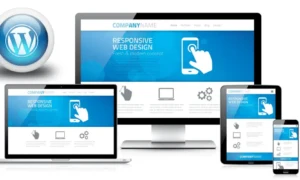In today’s digital era, it’s imperative for websites and web applications to seamlessly function across multiple web browsers, ensuring users encounter a smooth browsing experience. Cross-browser testing has evolved into an integral part of the software development process. This overview delves into its fundamental principles and underscores its significance in guaranteeing uniformity and compatibility across various browsers.
Understanding Cross-Browser Testing:
Cross-browser testing, also known as browser testing, is designed to validate the proper functioning of web applications across a diverse range of web browsers, operating systems, and devices.
While web browsers adhere to common standards such as HTML and CSS established by the World Wide Web Consortium (W3C), they may interpret code differently, resulting in disparities in appearance and functionality. Several factors contribute to these variations, including default settings of browsers and operating systems, customized user preferences, disparities in hardware capabilities, variations in rendering engines, varied levels of support for web standards, and the use of assistive technologies.
By conducting comprehensive browser testing, developers ensure a seamless user experience across different browser environments, thereby enhancing the overall quality of applications and user satisfaction.
How Cross-Browser Testing Works:
Cross-browser testing can be executed manually or automated to ensure consistency and functionality across diverse web browsers.
- Manual Testing: This involves manually navigating through different web browsers to detect any inconsistencies in functionality or appearance.
- Automated Testing: Utilizing automated scripts to simulate user interactions across various web browsers and platforms, facilitating swift testing and consistent outcomes.
Regardless of the chosen testing method, the primary goal remains constant: identifying and rectifying frontend errors before they impact actual users.
Benefits and Applications of Cross-Browser Testing:
Here are four significant applications of browser testing:
- Enhanced User Experience: Ensuring a seamless user experience across various web browsers and devices, leading to heightened user satisfaction.
- Improved Discoverability: Enhancing frontend performance, potentially boosting search engine rankings and organic traffic.
- Addressing Browser-Specific Challenges: Identifying and resolving challenges unique to certain browsers, enabling effective communication with users.
- Managing Code Updates: Streamlining the resolution of compatibility issues while managing code updates across diverse clients and devices.
When to Conduct Cross-Browser Testing:
Cross-browser testing is typically conducted at two critical stages:
- During Development: Integrated into continuous integration pipelines to identify compatibility issues early in the development cycle.
- In Staging/Pre-Release: Quality Assurance (QA) teams perform browser testing on release candidates to ensure a seamless user experience before deployment.
By incorporating browser testing at these stages, development teams can proactively address compatibility issues, ensuring consistent performance across various web browsers and devices.
In Conclusion:
Cross-browser testing plays a pivotal role in ensuring the consistent performance of websites and web applications across diverse web browsers. Through comprehensive testing across different browsers, developers can identify and resolve compatibility issues, ultimately delivering a seamless user experience. As the diversity of web browsers and devices continues to expand, browser testing remains essential in delivering high-quality products to a diverse user base.





























